The Evolution of Cretan Traditional Dress
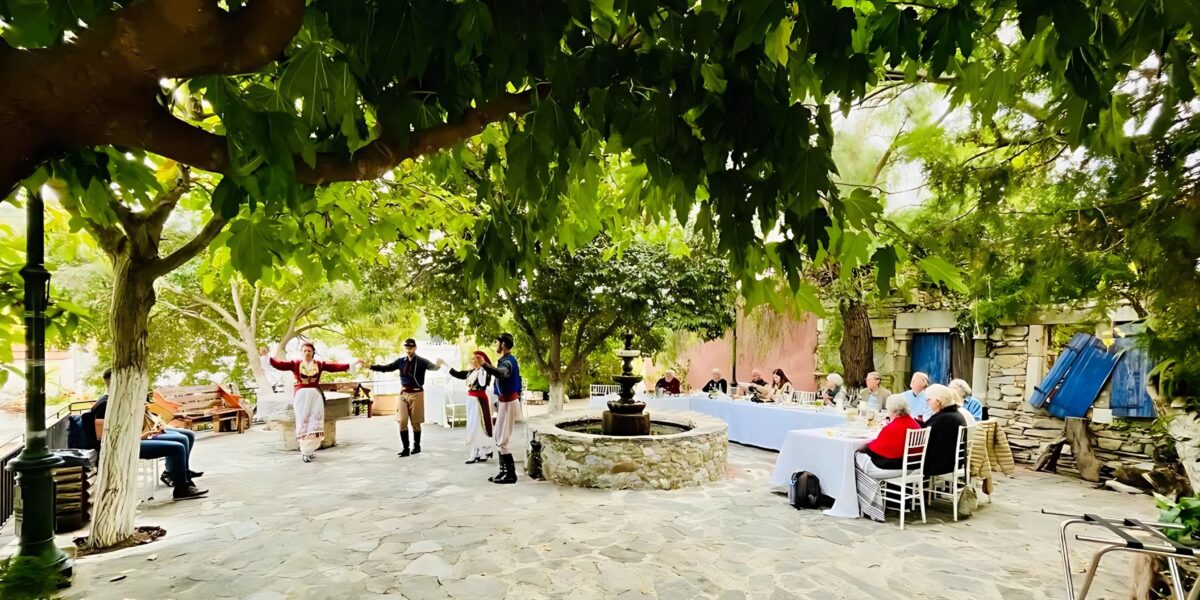
This blog explores the evolution of Cretan traditional dress, highlighting how it reflects the island’s history, cultural influences, and everyday life across generations.
Traditional Cretan clothes show how different cultures, local history, and the life of people on the island are all mixed together. The way people dressed would show their social status, and made sense for the weather and the land there. These clothes started long ago. Over time, the costumes changed, mostly because of the Byzantine and Venetian rulers. Cretan traditional dress included items worn by both men and women, such as a white shirt, which was an important and shared part of their dress. The other clothes, like the detailed vests and bright aprons, meant much more to people than just style. They stood for family traditions and Cretan identity as well. Let us take a look at how these outfits changed over the years and at how people made them.
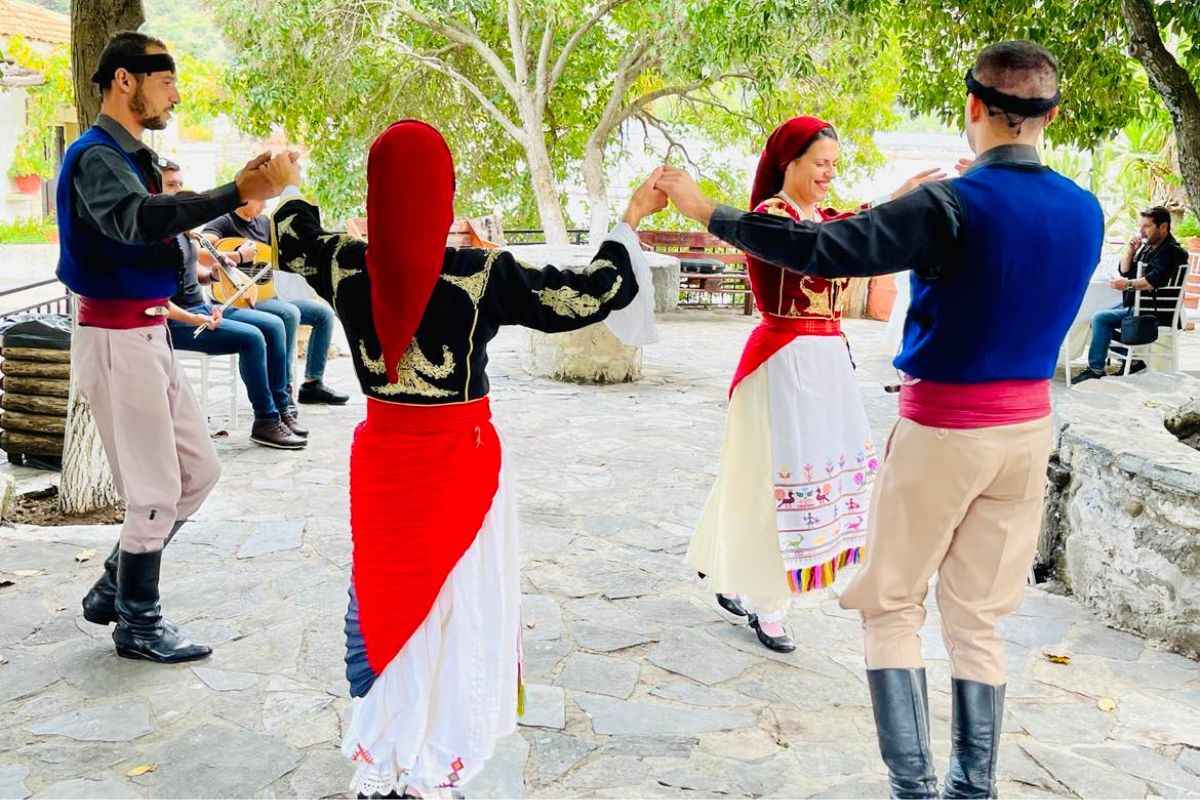
History of the Traditional Cretan Costume
The history of Cretan traditional dress is closely tied to how the people of the island mixed with both Byzantine and Venetian cultures. After the Venetians took over Crete, local people kept wearing the Byzantine „Stichario.“ This was a long piece of clothing that had bright colors and fine lace. As time passed, the Venetians brought their styles. Their fashion made clothes on the island look more ordered and shaped. At this time, what you wore could show if you were rich or poor. The wealthiest followed the Venetian ways, while farmers and others with less money stayed with plain outfits.
In the 17th century, there was something new called the „Vraka.“ This was a pleated trouser that is still known today. Later, in the early 1900s, the „Kilota“ became popular. This happened when more people moved around the world and people wanted clothes that one could use every day. Women saw their clothing change too. Italian-style dresses took the place of the big cloaks worn before. Women also wore aprons with thread designs and added pretty extras. Over the years, Cretan costumes always held onto their link to the island, showing strength, culture, and deep pride in where they come from in Crete.
Modern Versions vs. Historical Styles in Cretan Traditional Dress
Modern styles of Cretan traditional dress show both old and new looks. In the past, these clothes had a lot of embroidery and many layers. Today, newer styles are simpler and easier to wear. This makes them good for more people. Men’s outfits, like the vraka, still show social status. They use different kinds of materials and decoration, but keep their cultural meaning. Cretan women also change old styles to fit what people like now. What they wear today still shows the history of the island and keeps the Cretan look in this new time.
Symbolic Interpretation of Colors and Patterns
Every color and pattern in Cretan traditional dress has deep meaning. They connect people to their identity and history. Black is the color that men often wear on the island. It stands for mourning and respect. This shows how much their culture values family bonds. For women, the clothes use bright decorations. These show purity, strength, and life. There are noteworthy patterns in the embroidery on their clothes. These patterns talk about good luck or keeping people safe. Some clothes have bright red aprons and pretty flower decorations.
These designs come from when the Venetians were on the island. They mix practical needs with art. Patterns and designs show social status, too. Both men’s and women’s clothes might have gold embroidery. If you see gold on the clothes, it can mean the wearer is wealthy or important in their community. The designs tell you about the person and the place they come from. Even now, Cretan dress says a lot about the values and traditions of the people who wear it—showing where they come from and what they stand for.
Materials and Crafting Techniques of Cretan Traditional Dress
The beauty of Cretan traditional clothing comes from the way materials are picked and the care put into making each piece. Wool and felt were often used by men, and these fabrics were strong enough to last through hard work and cold months. On special days or during big events, silk was added to the clothes to make them stand out. Wearing silk showed that someone had high social standing. Cretan women have always had an important part in making these costumes. These women spent hours weaving and adding embroidery by hand, often creating complicated patterns. Some techniques, like using gold-thread embroidery on vests and aprons, are tricky to do and need a lot of skill. Women taught these methods to their daughters, so the knowledge would stay alive in the family.
The way these costumes are made has become a big part of Cretan culture. Almost every part of the costume shows off detailed decorations, if it is lace, edging, or other small touches on the accessories. Making these clothes was more than just about need. It was also a way for people to share their stories and show pride in their area and families. When you see these woven and stitched items, you are looking at the spirit of Crete and the hard work of Cretan women who kept these traditions strong. The art of embroidery and the love for design still live on in Crete today.
Geographic Variations Within Cretan Traditional Dress
Cretan traditional clothing looks different in each part of the island. What people wear shows the local customs and the land around them. For example, the „Sfakian“ costume from the Sfakia area has dark colors, long pleated skirts, and gold braids. People often use this outfit for weddings or special parties. In the northwestern part of Crete, people wear clothes made with lighter fabrics and with a simple design. These styles work well for hot days and normal daily life. In some mountain villages, people have one-of-a-kind hats or decorations that help show who they are.
These little changes in style come from things like where people live, what they do for work, and old traditions from when Venice ruled the island. All these different styles are a big part of Cretan culture. Every area has something valuable to share. These clothes together show just how many stories the island can tell. The strong link between place and what people wear gives more meaning to the long tradition of dressmaking in Crete.
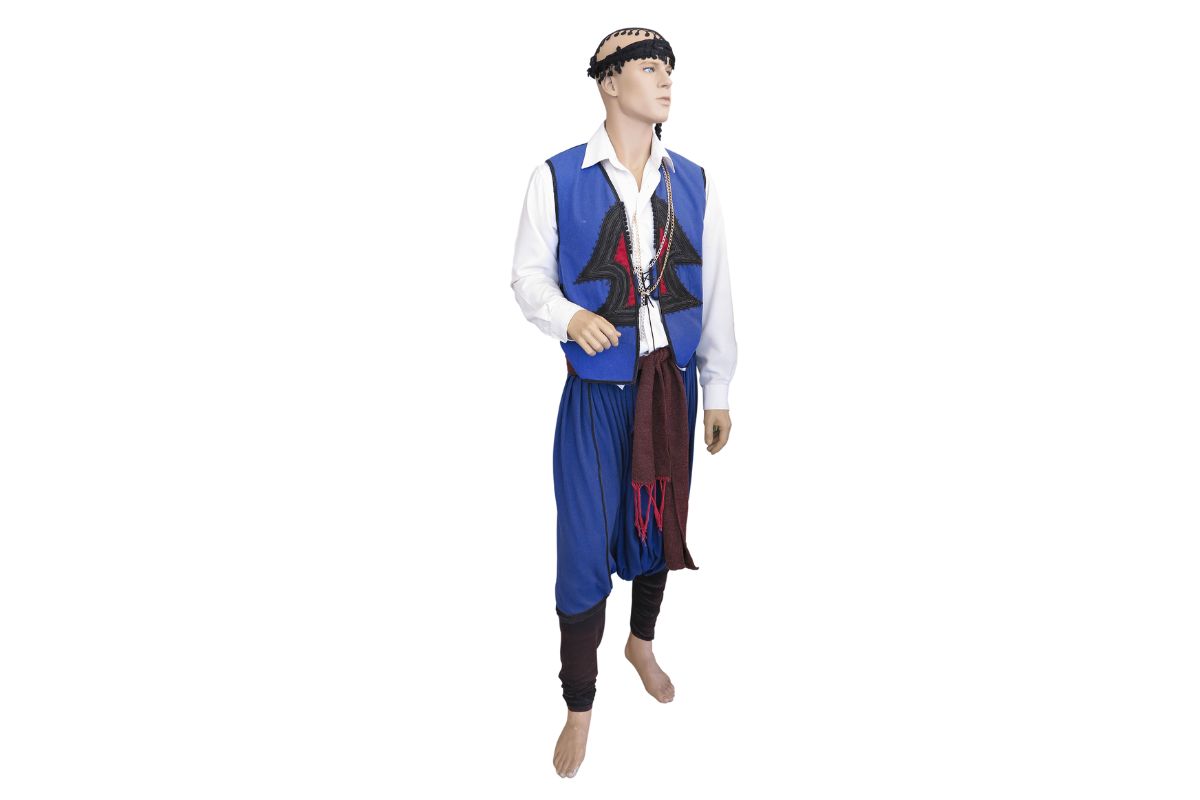
Male Cretan Traditional Costume
The male Cretan traditional costume stands out because of how it looks and works. The main part of this traditional costume is the vraka. This is a pleated piece of clothing. It lets men move freely and shows the tough way the people of the island live. Men on the island usually wear the vraka with a white shirt. They also have a vest with detailed embroidery. The whole outfit is put together well and it shows great skill. Over the years, people have made these clothes with care, and they pass down the knowledge. The Cretan traditional costume also shows the social status, pride, and deep roots that men in Crete have. It is a big part of who they are and what the island means to them.
Kilotas
The „Kilota“ is a key change in Cretan men’s clothing, showing up in the early 1900s when new trends started to show. This beige wool trouser is tighter than the old „Vraka.“ People in Crete and those who moved to America liked the „Kilota“ a lot during the National Resistance. The trouser tucks into „Stivania“ boots, which helps men move with ease. Men would wear it with a black shirt, made from silk or cotton. On the head, the black kerchief with fringes was common; it stood for tradition and pride. A wide leather belt made things handy and tied the look together. The cretan vest, using the same fabric as the trousers, added class to the whole set.
The design of the „Kilota“ is neat and simple. It became a strong part of Cretan fashion, mixing daily needs with long history. Even today, many see its grace. Its style shows how Cretan clothes grow and change with time and people.
Vrakas
The vrakas is a key part of the Cretan men’s outfit. This traditional clothing comes from the island of Crete and mixes old meaning with new looks. Long ago, people made these pants from tough fabrics. They often added embroidery and fringes, showing the social status of the man wearing them. Most old styles used darker colors. But now, there are light colors too. People love to wear vrakas with a white shirt and a good vest. These changes show how fashion changes over time but still respect the culture and history of Crete. Many people on the island still value these classic Cretan touches even now.
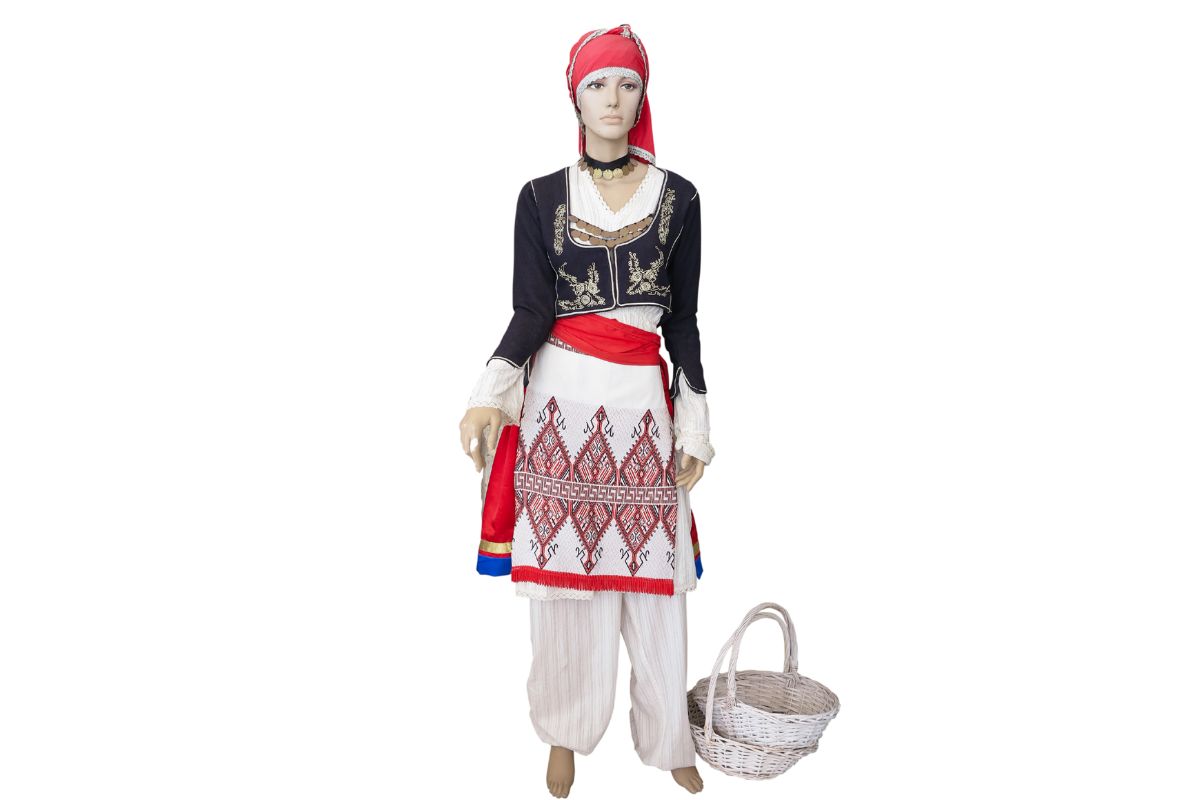
Female Cretan Traditional Costume
Cretan women wear clothes that show a deep sense of tradition and skill. The sartza is a main piece in their attire. It is often made of bright fabric and has fine embroidery. This work shows both the social status and the region that the wearer is from. The kuda is another part of the outfit. This shawl adds both beauty and warmth. The sfakian is also important. It is a traditional skirt with nice decorations and fringes. All these garments together show the lasting ways of the island, the style of cretan women, and their skill at making clothes using embroidery and little details.
Sartza
The sartza is a dress that is shaped by time and tradition of Cretan women. This dress comes from the island and uses bright colors and detailed embroidery. It stands for the exceptional look of Crete. Now, people still wear sartza, but often change it a bit to fit new styles and use modern fabrics. It is common to see old patterns mixed with new designs. This mix lets people show who they are. Sartza is mostly worn during special events and helps to show social status and heritage. For many, it is a proud symbol of being Cretan and shows the deep roots of their tradition on the island.
Kuda
The kuda is a part of Cretan women’s clothing that mixes being useful with looking elegant. It is known for having bright colors and pretty embroidery. There are often fringes on the kuda that show the skill of the people who make it. The design of the kuda comes from the island and shows what people there like. It is also used to show social status among women. People on the island usually wear the kuda with a white shirt. The kuda shows the long history and deep culture of Cretan fashion, and it is still loved by many today.
Sfakian
Sfakian clothing shows the strong mix of tradition and who people in Crete are. You can see this in the women’s clothes, which have skirts that flow and detailed embroidery. The bright colors and the fringes on these clothes often show social status in the community. For cretan women, these outfits hold deep meaning. They wear their sfakian dresses with pride at festivals and big events. That is how they help keep their culture alive. Making each dress also takes a lot of skill, showing how people on the island still use old ways to make beautiful things today.
Through this, cretan people can feel close to both their past and the present. The traditional clothes from the island of Crete show its deep historical roots and help people know about social status and who they are. Cretan traditional dress includes men’s and women’s outfits with detailed embroidery. They also use meaningful pieces like the vraka. These come from both old ways and have some things from Venetian clothes. Over time, these garments keep changing, but they still show the strong and lasting spirit of Cretan people and their culture.
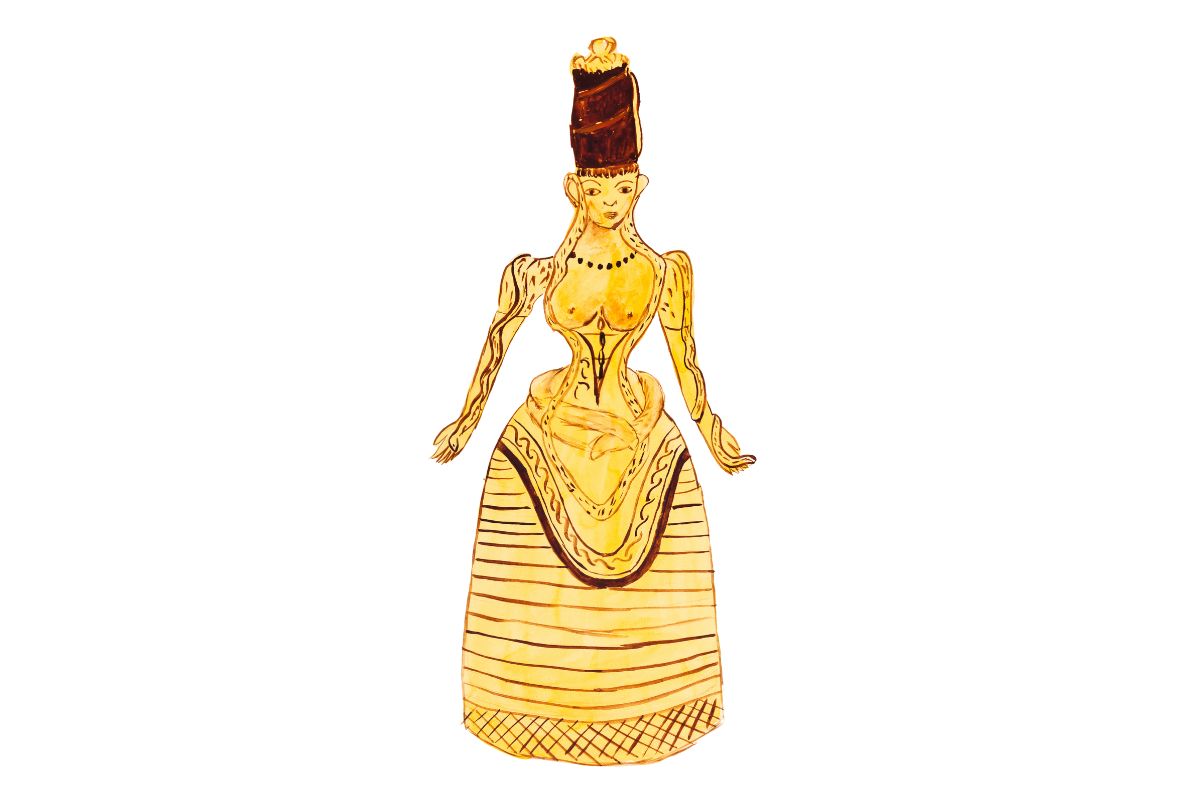
Frequently Asked Questions
What do People in Crete Traditionally wear?
Traditional clothing in Crete is different for men and women. The men in Crete usually wear vrakas. The women have their clothes called sartza, kuda, or sfakian. These items show the cretan way of life. They also use rich fabric and detailed designs. All these clothes help tell the story of crete and its people over the years.
